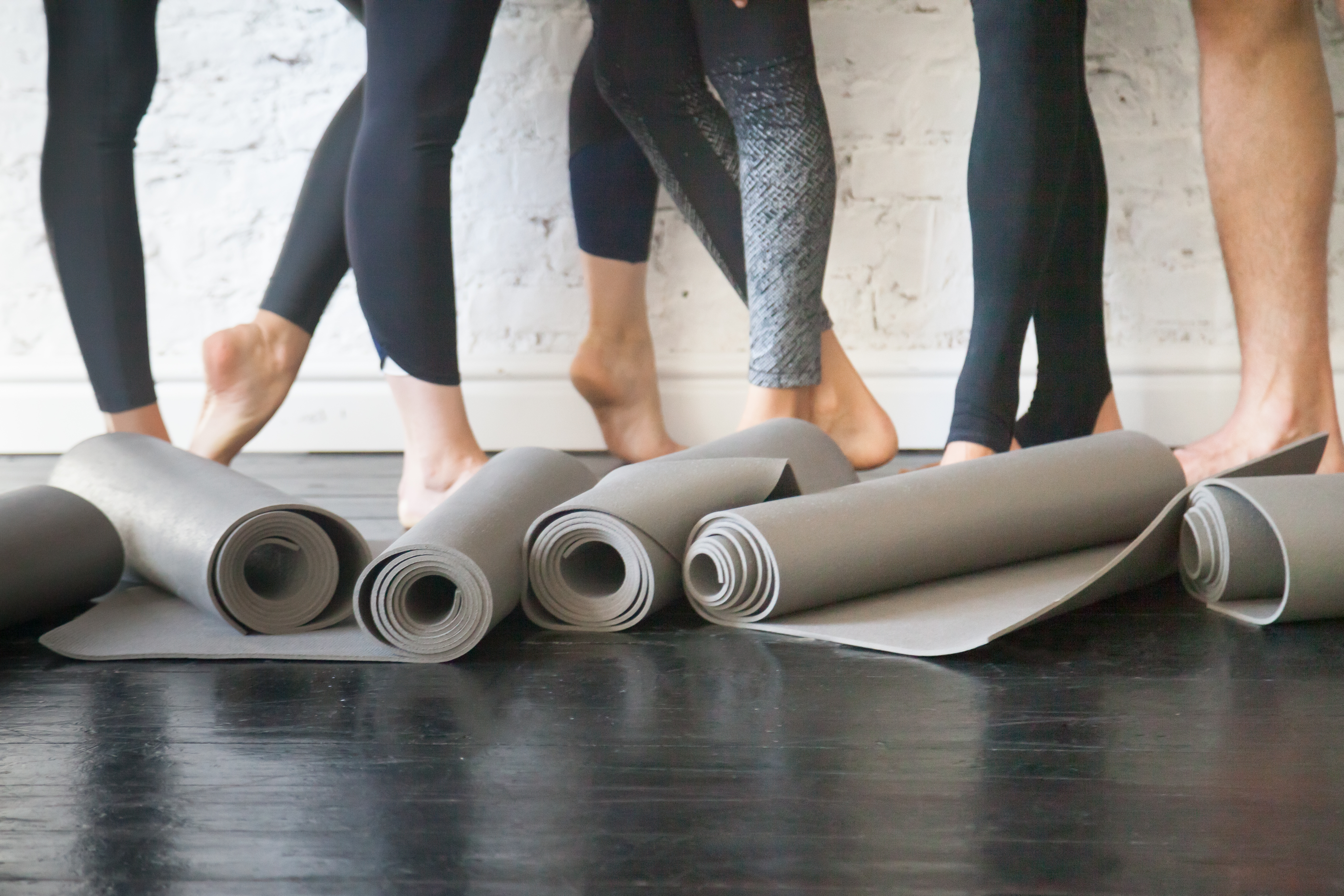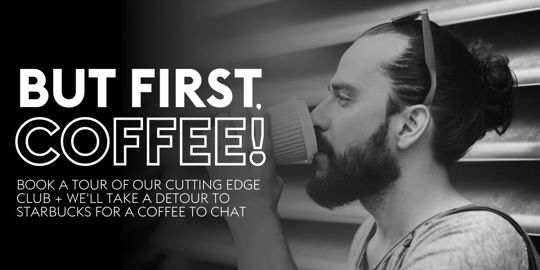Do you know your Powerhouse from your Prone?
The fitness arena is crammed with new buzz terms and vocab as more and more fitness classes emerge. If you haven't tried Pilates yet, it's currently one of the most popular fitness classes out there.
Now, it may look from a distance much like a load of people in lycra, pretending to be trees, but Pilates is actually a great full body toning workout.
If you're a Pilates newbie, we've outlined a few basics to get you started and prep you on what to expect for your first Pilates class.
What Will It Do?
Our Pilates classes will help to improve your posture, align your body, improve your breathing and give you one heck of a core workout.
Done regularly, Pilates can help with weight loss, toning up those loose bits and strengthening key muscles including your abs, legs, glutes and back.
What's It All About?
Pilates is a low-impact fitness class that targets key muscle groups. You'll hold certain poses for a set length of time to strengthen muscles, and breathe rhythmically to improve your 'flow'.
A typical Pilates class at Village Gym is 45 minutes to an hour long.
The idea of a Pilates class is more about control rather than cranking out endless reps until you're knackered. Your body works against gravity, isolating specific muscles as you move to tone and shape each one as you go.
How Tough Is It?
Well, it's still a workout, so be prepared to sweat and feel the burn. You won't be running about, performing burpees or lifting weights, instead, you'll be making small, precise movements that target specific muscle groups. The bodyweight exercises in our Pilates class are designed to put your body to work!
Certain moves, you'll find easier than others, though hey, you're new, so you'll improve as you go along! The Pilates Hundred, for example, focuses on the abs. Rather than cranking out sit-ups, you'll move your abs just a few inches and hold. Oh, you'll feel it, though you'll be thankful for those tighter abs in weeks to come!
If you find the moves a little too challenging, our expert Pilates instructor will modify manoeuvres for you whilst you get into the swing of things. Ensure you let your instructor know that you're new to Pilates before the class kicks off.
What Is Pilates Good For?
Um, what isn't it good for? Pilates works several muscle groups, including your core (abs, back, hips) and trunk (inner thighs, outer thighs, and back)
It's a great full body workout, and low intensity too, so it's less stressful on the joints, making it popular with older members and those suffering from joint pain. Pilates in Aberdeen is one of the most popular group fitness classes for the over 50's.
Pilates is a great way to improve your flexibility, posture and tone up any wobbly bits.
How Often Should I Do Pilates?
Much like other exercises, Pilates should be done around 3 times per week to keep your core strength up and ensure you see the results you want. It can be done how ever many times you’d like in a week depending on muscle soreness and general fitness levels. The more time you spend working out with Pilates, the faster you’ll see those toned arms and tummy take shape!
Can I Teach Myself Pilates?
Of course! If you’re curious about this type of exercise and how it could help you achieve your fitness goals, it’s always a good idea to try it out beforehand. There are a ton of resources available online to help you on your way to becoming a Pilates master, from helpful videos to books. If you’d like the support of a group and a dedicated coach, our Pilates classes are beginner friendly!
What Should You Eat Before Pilates?
As a general rule of thumb when exercising, you’ll want to keep your meals before working-out light, nutritious and full of energising vitamins! Low-fat yogurt with berries and nuts is a fantastic choice or go for a protein rich soup to get you through. Avocado and eggs are a popular combo for that energy boost and these foods are rich in protein. You should eat around 2 hours before your class to ensure you have enough energy to power through and into your post-work out snack!
Is Pilates Harder Than Yoga?
Though both exercises carry the same general ideas and principles, Pilates is considered a more intense version of yoga as the poses and positions are more tailored to muscle toning and weight loss - great for those looking for faster results for their goals with full-body conditioning.
Can Over 50’s Do Pilates?
Absolutely. Pilates is a fantastic work-out for any age, but it’s a great match for older people wishing to tone up, realign or experience weightloss as the slow movements can be adjusted to suit anyone whilst still ensuring you’re getting the very most out of your workout.
Is Pilates Enough To Tone Up?
Yes! Pilates is designed specifically to tone muscles as opposed to increasing muscle mass, so you can work-out knowing that those summer holiday pics are going to come out fabulous! With regular workouts and healthy eating, you will see results in as little as a few months, so stay motivated and trust the process - you got this!
What Should I Wear?
You'll want to be sure your body is free to move. So avoid anything that restricts your movement, but also anything that hangs too loosely... nobody wants to get their trailing tshirt caught on nearby bits of kit!
Wear something body-fitting so that your Village Gym instructor can check your Pilates movements and correct any poor posture as you go.
Consider that your body will move through a range of motions - lying on your back with your legs in the air (baggy shorts are a no-go here). Bending over into an arch, with hands and feet flat on the floor (loose vest tops might not be ideal!)
As for your feet, feel free to go barefoot or wear socks. Choose a pair designed for pilates with rubber grips on the bottom to avoid slipping and sliding.
Pilates Jargon Busting and Buzzwords
As with most fitness trends, Pilates has its own jargon. You'll get to grips with the lingo soon enough, though don't be surprised to hear these terms being bandied around as you attend classes:
"Powerhouse": This means the center of your body, where all of your power comes from to make each movement.
"Peel through your spine": This is an instruction and, when asked, you’ll have to make slow movements, focussing on your spine, as though you're stretching it from bottom to top.
"Dorsiflexion": This term means pulling the toes back toward the shins, flexing the entire foot at the ankle.
"Imprinted Pelvis": This involves lying on your back, drawing the stomach "in and up" to lengthen your spine perfectly along the mat, leaving no gaps. Imagine you're trying to make an imprint of your body on the mat.
“Neutral Pelvis”: When your pelvis is in the most relaxed position with your natural curve in your lower back and your stomach and abs relaxed.
“Neutral Spine”: When your spine is in its relaxed, curved position.
“Pilates V”: This is widely known as the first position in Pilates and is named for the ‘V’ shape your legs take when you get into the position.
“Table Top”: This term is used when your leg is at a 90-degree angle while lying on your back.
Tips For Pilates Newcomers
Take your lead from other Village Gym members. Try to position yourself with someone on your left and right so that you can follow their movements no matter which way you're facing.
Stand towards the front so that you have a clear view of your instructor, and of yourself in the mirror. This way, you can see how your body is moving and where you need to correct that posture.
One of our members who enjoys pilates in Edinburgh suggests;
"Dress for comfort not style! Take a bottle of water to stay hydrated and bring a sweat towel. It can get warm in the studio once we get going."
Ready for more? Book your Pilates class online via the app or log in to our Member's Area.


